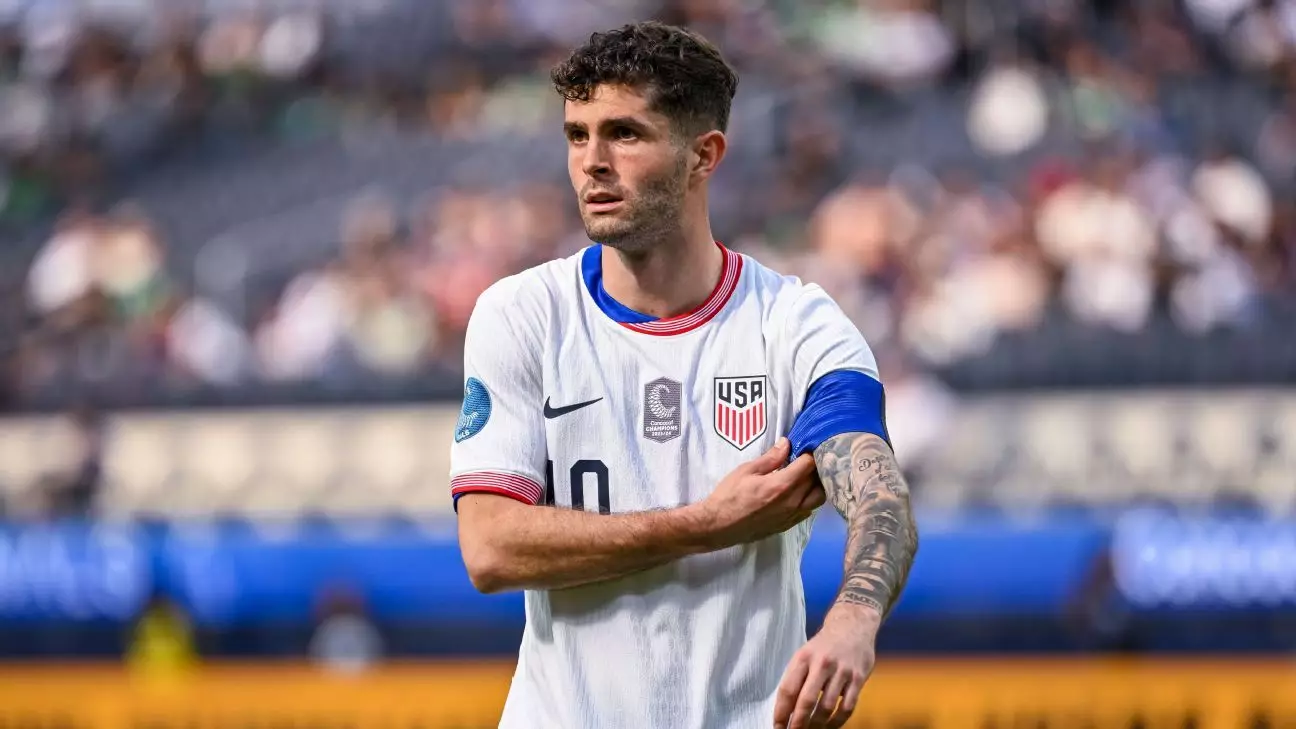Christian Pulisic has emerged as the most recognizable figure in American soccer, a sentiment echoed by head coach Mauricio Pochettino. With Pulisic’s undeniable talent and performance in Europe, he stands out not merely as a player but as an icon for the United States. Pochettino’s bold assertion that Pulisic should embody the same status in America as Lionel Messi does in Argentina sparks a conversation about identity, legacy, and the evolving landscape of soccer in the U.S.
The 26-year-old forward carries an impressive resume: with 32 goals and 18 assists in 76 international appearances, he has proven instrumental for the U.S. Men’s National Team (USMNT). His contributions helped secure multiple Concacaf Nations League trophies, indicative of his potential to steer the national team toward future triumphs. But beyond mere statistics, Pulisic represents hope and excitement for a nation with aspirations of soccer greatness.
The Weight of Expectations
However, with such talent comes immense pressure. Pochettino’s comments highlight the significant expectations placed on Pulisic and the potential burden of being the face of U.S. soccer. The analogy to Messi, while flattering, presents a double-edged sword. Messi is not only a phenomenal player but also someone who has consistently performed at the highest levels across competitions. For Pulisic to truly achieve this status, he must navigate both the expectations of fans and the realities of pressure-packed international tournaments.
Compounding this narrative is Pulisic’s recent decision to skip friendly matches and the upcoming Gold Cup, a choice not without its controversies. While many fans feel a player should prioritize national duty above all, Pulisic’s decision to rest is a necessary step toward sustaining his career at a club level, especially after a grueling season in Europe. His prior stellar season, recording 17 goals and 12 assists, makes this decision more understandable. He is a man in demand, navigating the tightrope between club and country.
Protecting the Star Player
Pochettino’s defense of Pulisic’s decision is encouraging. The coach emphasizes the importance of communication and understanding personal circumstances for players. This approach is a refreshing take on player management and reflects a growing recognition that international duty must be balanced against the rigors of club commitments. Pulisic’s prioritization of his physical and mental condition for the 2026 World Cup illustrates his maturity at a young age.
The conversation about dedication to the national team should extend beyond Pulisic. Pochettino argues that every American player should aspire to the same level of commitment seen in South American and European stars. Referencing players like Messi and Neymar, he points out the innate pride that drives elite athletes to don their national colors, regardless of the stakes. This cultural shift is critical for nurturing a sense of responsibility among U.S. players—it’s about more than just sporting performance; it’s about pride, identity, and belonging.
The Future: A Test of Resilience and Commitment
As the USMNT preps for upcoming friendlies against Turkey and Switzerland, and eventually competes in a stacked Gold Cup lineup, the team will have to manage several absences, including core players like Tim Weah and Weston McKennie. The onus now falls on Pulisic, among others, to not only rally the remaining squad but also to serve as the beacon and source of inspiration for both teammates and fans alike.
This period could serve as a critical juncture in not only Pulisic’s career but also in the trajectory of American soccer as a whole. Collective resilience will be tested as the U.S. team strives for identity, performance, and an evolving narrative in the global soccer landscape.
We are witnessing Pulisic’s ascendancy and the profound legacy he could leave behind. If he channels the right balance of skill and dedication, Pulisic might just transform from a rising star into the unequivocal soccer icon that the United States has long awaited.


Leave a Reply